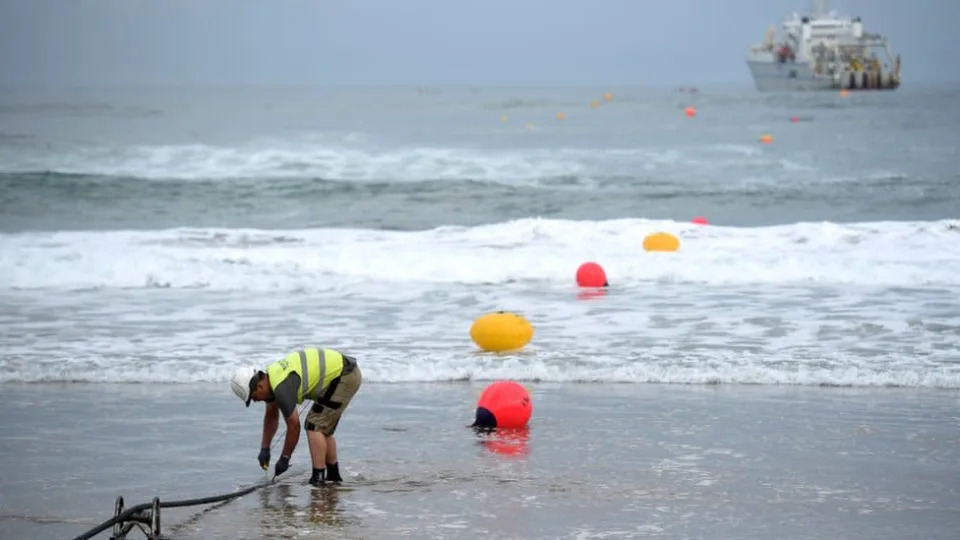

Subsea internet cables could help detect earthquakes
source link: https://finance.yahoo.com/news/subsea-internet-cables-could-help-191146267.html
Go to the source link to view the article. You can view the picture content, updated content and better typesetting reading experience. If the link is broken, please click the button below to view the snapshot at that time.
Subsea internet cables could help detect earthquakes

Internet cables that crisscross the sea-floor could be used to detect earthquakes and tsunamis or monitor how climate change alters ocean currents.
These telecoms cables could be used as a giant array of deep-sea scientific sensors, the UK's National Physical Laboratory (NPL) and its partners say.
Scientists tested the technique on an optical-fibre link between the UK and Canada.
The research is published in Science Magazine.
Because installing permanent sensors to monitor the ocean floor is very costly, only a few exist globally, the scientists say.
"70% of the Earth's surface is water but all the seismic stations are on land, because it is too difficult and expensive to install permanent sensors on the seafloor" Dr Giuseppe Marra of the NPL told the BBC.
But numerous optical-fibre cables carry data across the world's seas and oceans.
It is estimated there are more than 430 around the world, spanning distances of 1.3 million km (800,000 miles)
According to Dr Marra vibrations, pressure and temperature changes affect, by a very small amount, the speed of light as it travels through the cable which extremely sensitive instruments can then detect.
The researchers said they had detected earthquakes and "ocean signals", such as waves and currents, using a 5,860km EXA Infrastructure optical-fibre link between Southport, Lancashire, and Halifax, Canada.
The scientists were able to use individual spans of cable between repeaters - devices that help boost the signal - as separate sensors.
"If we apply this technique to a large number of cables", Dr Mara said, "we could transform this underwater infrastructure into a giant array of detectors for earthquakes, ocean currents and more.
"Extending the seismic network from land to the seafloor will improve our understanding of the internal structure of the Earth and its dynamic behaviour" he added.
Cable-based sensors could identify the "epicentral area" of an earthquake in the same way as land-based seismometers, the researchers suggest.
Recommend
About Joyk
Aggregate valuable and interesting links.
Joyk means Joy of geeK